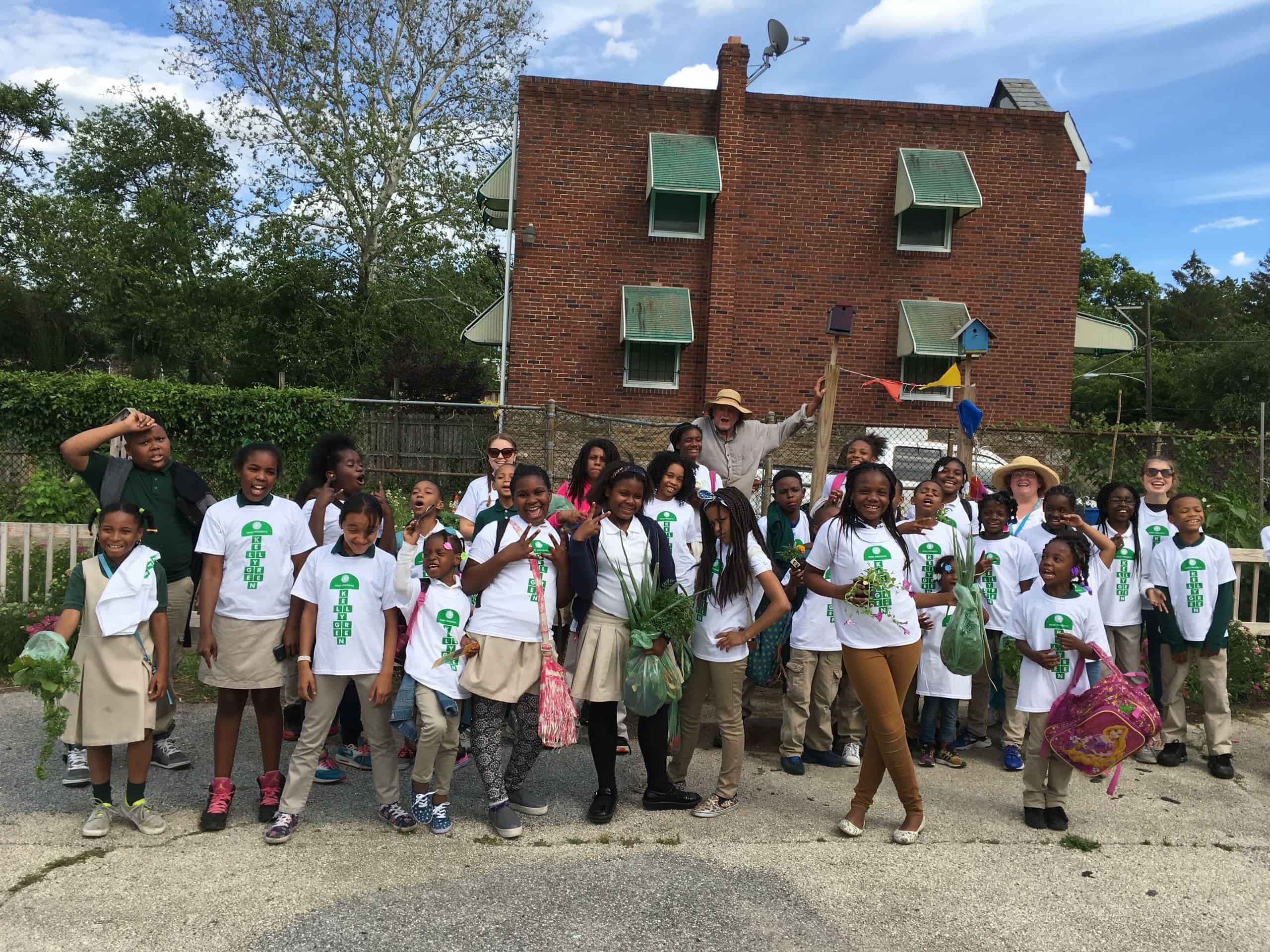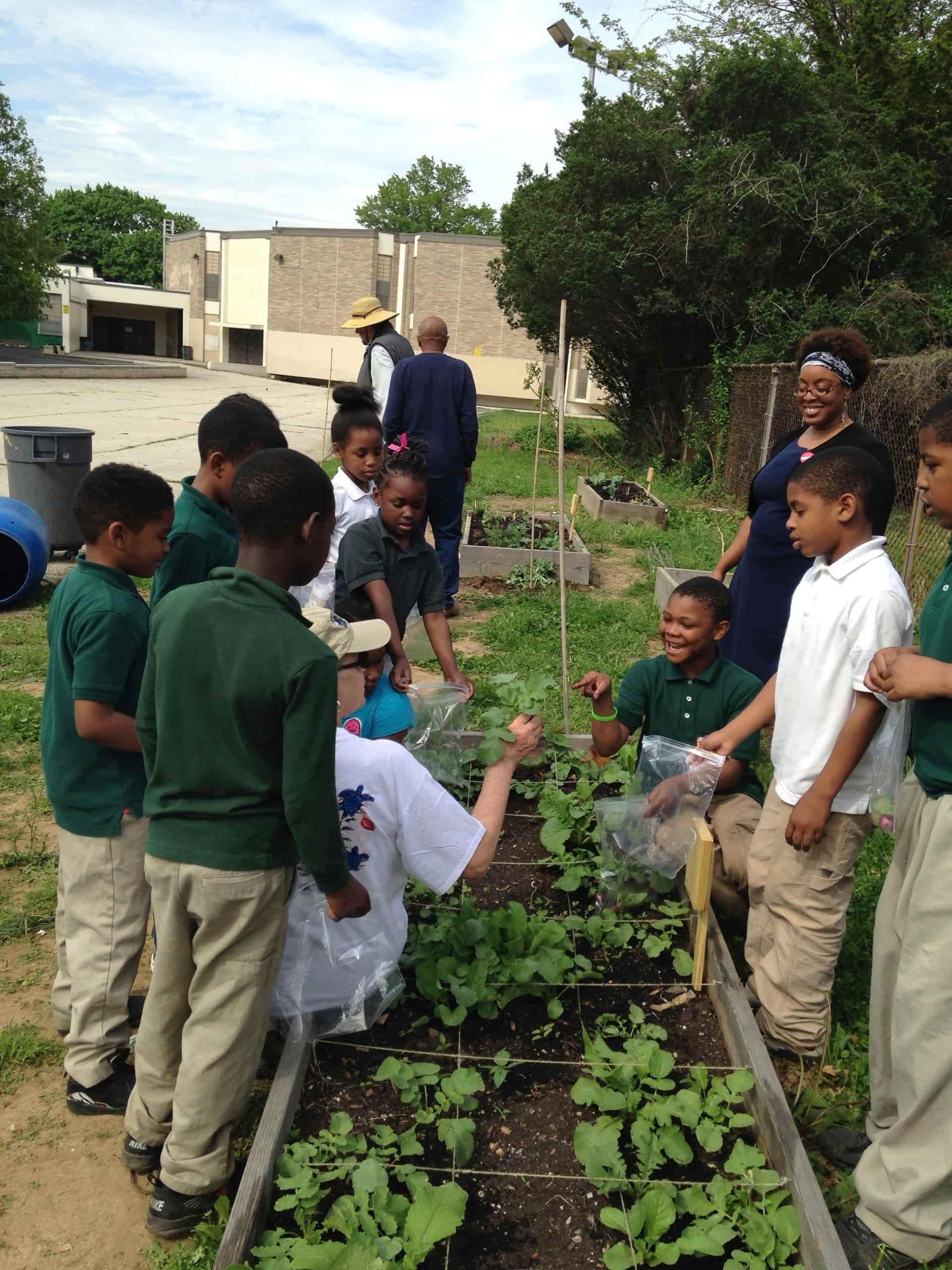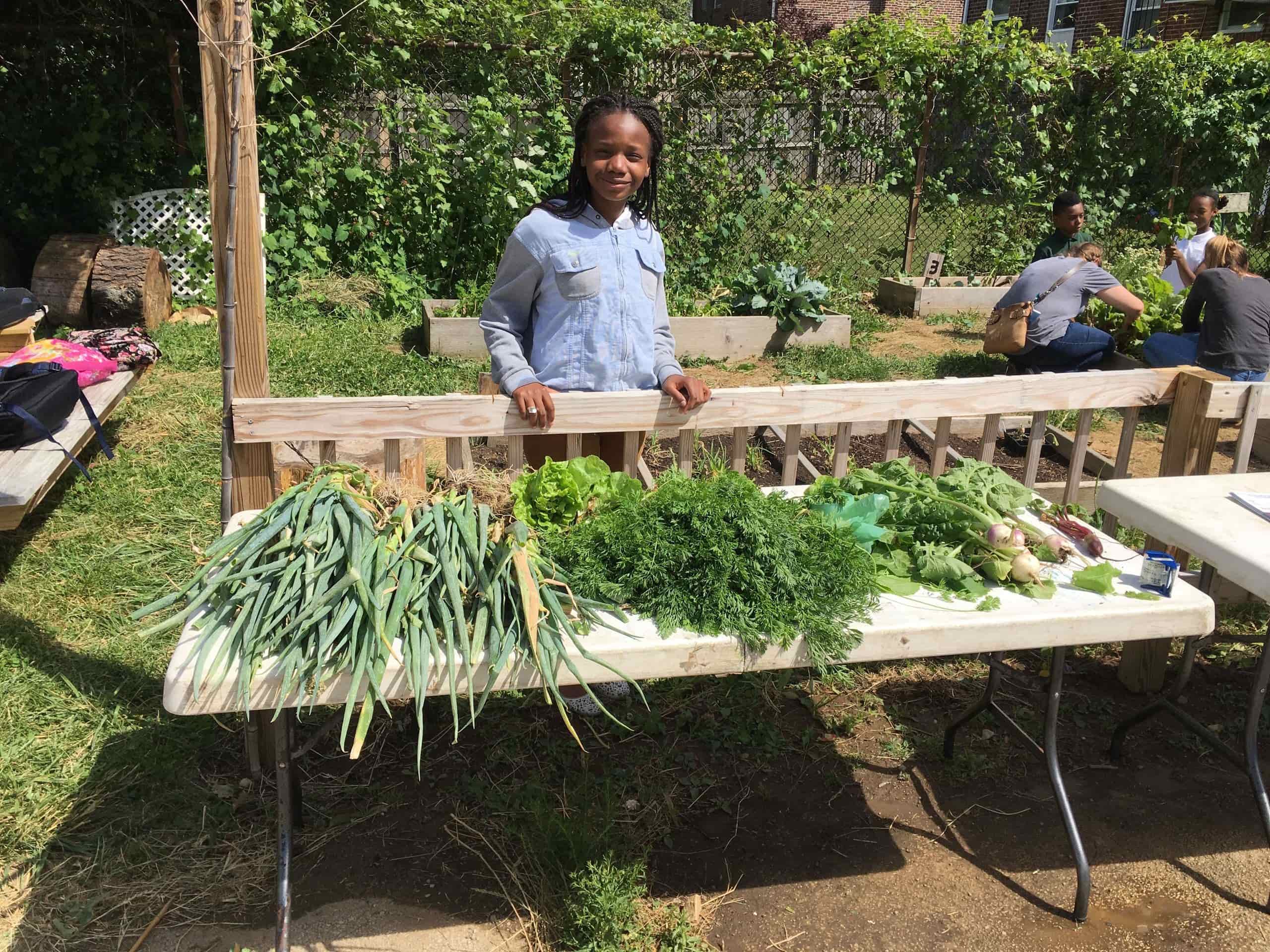The garden at Kelly Elementary is the centerpiece of the long-term Kelly Green Project, led by the nearby Hansberry Garden and Nature Center. The overall vision is to redevelop the sprawling, four-acre schoolyard to promote environmental education, healthy play, habitat conservation and community gathering.
In 2012, a grant for landscaping and architectural design brought together community members, students and professional architects to develop a comprehensive plan. It only took about a year to agree on the vision, but funding it all would be a multi-year challenge.
To get started, the team zeroed in on the school garden.
“We began an after-school garden club in the spring of 2014,” says Dennis Barnebey, a neighborhood resident, chair of the Kelly Green Project, and retired teacher whose kids once attended the school. “The schoolyard had a few garden beds on it that hadn’t been used for two or three years or more. We talked with teachers and school leadership. We put out a call for volunteers. We didn’t know exactly what we were doing. We just wanted the kids to get outside and experience green things. The first year we probably had 50 kids show up from grades K through 5. We had a great celebration at the end of the season and ate outside and shared the harvest. It was exhausting, but it worked and we wanted to continue.”

Next, they brought in education majors from Arcadia University to work with the kids and connected with Penn State Extension Service for expertise. Over time, they developed a curriculum and divided the elementary students into groups responsible for different areas and tasks.
By 2018, the garden program was running strong, but they wanted to build more connections to the classroom. A neighborhood parent with gardening knowledge was hired to work as a garden teacher a few hours per week. Six classes in grades 2-4 began visiting the garden for lessons during the school day.
Participating teachers have fully embraced the idea of bringing the garden into classroom lessons. They built a grow light system indoors to start seedlings and grow wheatgrass, which the kids made into smoothies. The garden teacher visits classrooms regularly to check progress and answer any gardening questions the teachers have.
Planting and tending the plants has become an important hands-on piece of the science curriculum, while tracking and measuring plant growth is a math lesson. Students also write and illustrate journal entries about their observations, and have discussion groups with classmates or give oral presentations to boost their communication skills.

“The fact we were able to start a program during the school day was the best engagement we’ve had with teachers,” Barnebey says. “Teachers see their kids in the garden. They see who’s interested and who enjoys finding the worms or digging in the dirt or taking care of plants — and those aren’t always the same kids who are best behaved in school. It’s a different way of having a relationship with kids, and a different way of learning.”
These positive experiences have led more teachers to jump in on the garden action. Recently, the art teacher worked with the Kelly Green Project to build a PVC pipe musical instrument for the garden. Other added features on the site that have helped to engage teachers and students include a natural tree stump and wood chip play area and a weather station connected to the school Wi-Fi so students can monitor air quality and rainwater in a native plant meadow.
As for the bigger picture of the Kelly Green Project, the team is still pursuing additional funding to complete everything in the original sitewide plan — and the momentum behind the project is building, thanks to the garden.
“The garden has really been the base of the pyramid for the other projects we want to take on, and we now have lots more people supportive and engaged in our efforts,” says Barnebey. “This is going to be a dynamite space someday.”



